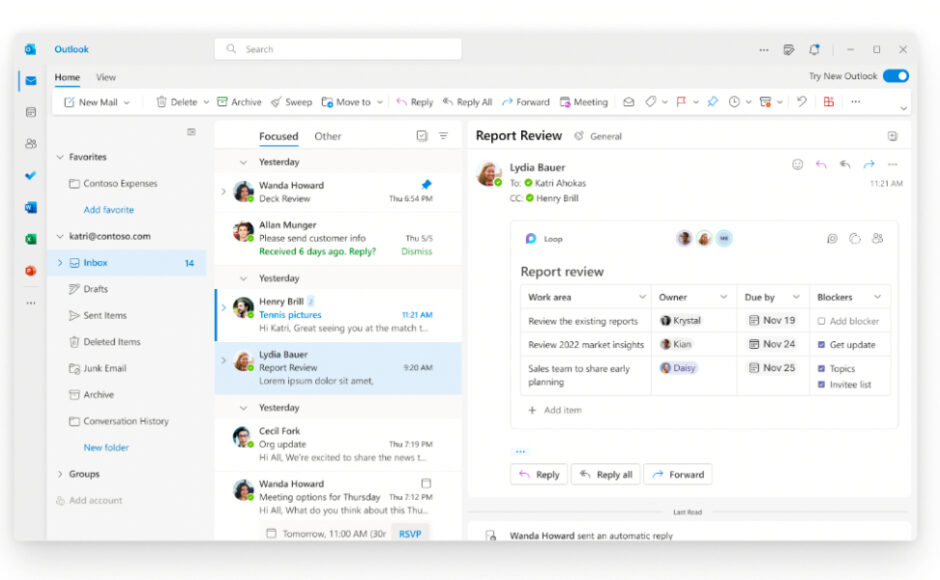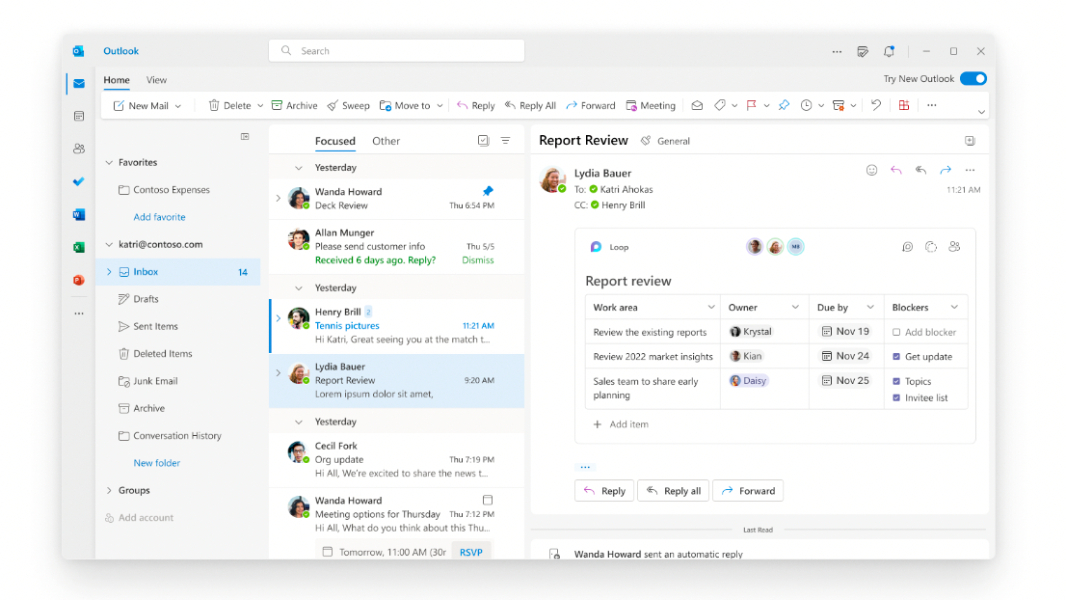In a recent update, Microsoft has shed light on its roadmap for the anticipated web-based Outlook for Windows, poised to replace the Mail and Calendar apps on both Windows 11 and Windows 10. The new all-in-one client is nearing completion and offers users the option to toggle to this modern interface through the existing apps or download it separately from the Microsoft Store.

Despite being a work in progress, Microsoft clarified that the new Outlook for Windows will coexist with the classic desktop app for the next couple of years. Caitlin Hart, Principal Program Manager at Microsoft, shared insights into the roadmap, outlining features expected in the upcoming iterations of the web-based client.
Key Features on the Outlook for Windows Roadmap:
- Auto Capitalization: Streamlining text input with automatic capitalization.
- Collapsible Headers: Enhancing the message list with collapsible headers.
- Conditional Formatting: Introducing conditional formatting for improved customization.
- Copilot Integration: Integration with Microsoft’s Copilot AI Assistant for enhanced productivity.
- Drag and Drop Support: Facilitating easy handling of emails and attachments through drag-and-drop functionality.
- Offline Support: Ensuring seamless functionality even without an internet connection.
- Innovative Features: Including inking (Draw tab) while composing an email.
- Expanded File Support: Adding support for EML, MSG, PST files.
- Outbox Folder: Dedicated space for managing outgoing emails.
- Advanced Search: Introducing a Teams tab in the search for enhanced collaboration.
- Consumer-Centric Additions: Shared calendar notifications for work accounts.
- Enhanced Security: S/MIME support for secure communication.
- File Management: Save as option for attachments, allowing users to choose the destination folder.
- Unified Experience: Integration of a Teams tab in search for a cohesive experience.
- Subscription Considerations: Users opting for the free version of the new Outlook for Windows may encounter ads unless subscribed to Microsoft 365.
Transitioning from the classic Outlook for Windows or the UWP-based Mail app to the new Outlook for Windows might present a shift for users, with the latter resembling Outlook on the web or the consumer-focused Outlook.com. Notably, Microsoft 365 subscription subscribers can enjoy an ad-free experience within the new Outlook for Windows.
As Microsoft continues to refine the web-based client, users can anticipate a blend of foundational improvements and innovative features in the evolving landscape of Outlook for Windows.
